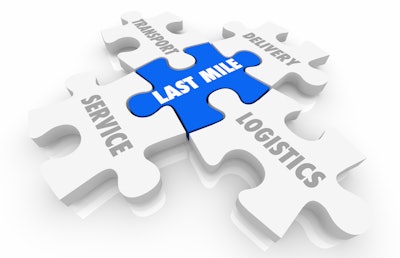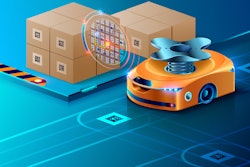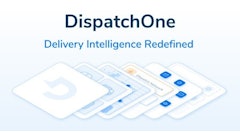
The world is emerging from the pandemic and working toward a sense of normalcy. However, realities on the ground are still far from normal, especially with supply chains and logistics operations. The current global disruption is due to multiple factors and creating enormous pressure on the entire supply chain, from production to logistics.
With demand surging to 15-year highs, businesses are struggling to return to pre-pandemic level output. This has highlighted the critical importance of technology’s impact on productivity and efficiency.
Whilst traditional technologies in supply chains and logistics have focused on solutions for automating and managing inventory, shipments and movements of goods, little has been done to improve human capital and workflow management to optimize operations. This principle applies throughout the supply chain -- manufacturing facilities, transport, inventory warehousing and the last mile.
Recently, the United Kingdom faced a crippling gas crisis, with fuel running out at petrol stations across the UK. The primary cause was not fuel production issues, but human capital and a shortage of truck drivers.
Technology solutions are emerging to address these problems and to optimize efficiency through the supply chain.
Taking production first, one naturally thinks of a traditional production line. However, before the line can start operating, an entire operation occurs involving the movement of people, equipment and goods.
Parts need to be received, stored and then moved to the production line, often using equipment. The logistics are usually labor intensive and inevitably chaotic at times. Technology to optimize movement within a production facility adds significant efficiency gains. By leveraging advanced solutions, the process can be fully automated.
Click here to hear more about automation in the supply chain:
From selecting an available team, auto assigning the pickup of parts, “uberizing” the availability of equipment (i.e., running forklift trucks as an Uberized service) and delivering the parts to the production line on time. Not only does this provide efficiency it ensures accuracy of job execution and creates instant awareness of bottle necks.
Similarly, warehousing can be challenging for large facilities. Although warehouse management systems (WMS) provide a solution for the management of goods and storage, the movement of trucks in and out of the facility and then tracking their whereabouts can be a tedious manual task.
That’s why a technology solution designed to optimize such operations from a logistical and security perspective is imperative. Prior to arrival, inbound truck drivers are issued with QR codes. The QR code links to data on the scheduled arrival time, plate number, type of cargo and other key details. On arrival, the driver presents his code and is then guided to a bay.
The truck is inspected digitally whilst an unloading team - already present - can start unloading cargo immediately. The truck then proceeds to the exit gate, is scanned again and finally authorized to exit the facility. The solution provides significant improvement in truck turnaround time, streamlines movement, adds security awareness of which trucks are present in the facility, their progress and their expected departure time.
Alternatively, last-mile operations have long been a challenge to logistics operators. Increasingly complex operations and a sharp rise in demand have put significant strains on shipping deliveries to clients. Technology solutions provide optimization in last mile delivery to lessen the burden on both drivers and dispatchers and reduce cost.
Artificial intelligence (AI)-assisted platforms provide tools to monitor available resources (e.g., drivers, fleet status, geographic distribution, location of deliveries and delivery capacity). Once a package is selected for delivery, algorithms can determine the delivery time window based on real time data and confirm booking times with the customer. After this, the delivery schedule for each driver is assigned automatically to optimize the daily delivery route. Ad hoc problems are instantly dealt with by the system and adjustments to delivery orders can be made on the spot.
By applying technology across the supply chain from production to delivery, efficiencies will be created to help business to tackle the demand surge in the short term and plan effectively for the future, using a data-driven approach.
Technology is changing the landscape of supply chains and logistics, and the good news is two-fold.
Innovations in warehousing, transport and manufacturing are paving the way for companies to manage challenging circumstances, and won’t break their budgets either.
![Pros To Know 2026 [color]](https://img.sdcexec.com/mindful/acbm/workspaces/default/uploads/2025/08/prostoknow-2026-color.mduFvhpgMk.png?auto=format%2Ccompress&bg=fff&fill-color=fff&fit=fill&h=100&q=70&w=100)








![Pros To Know 2026 [color]](https://img.sdcexec.com/mindful/acbm/workspaces/default/uploads/2025/08/prostoknow-2026-color.mduFvhpgMk.png?ar=16%3A9&auto=format%2Ccompress&bg=fff&fill-color=fff&fit=fill&h=135&q=70&w=240)








